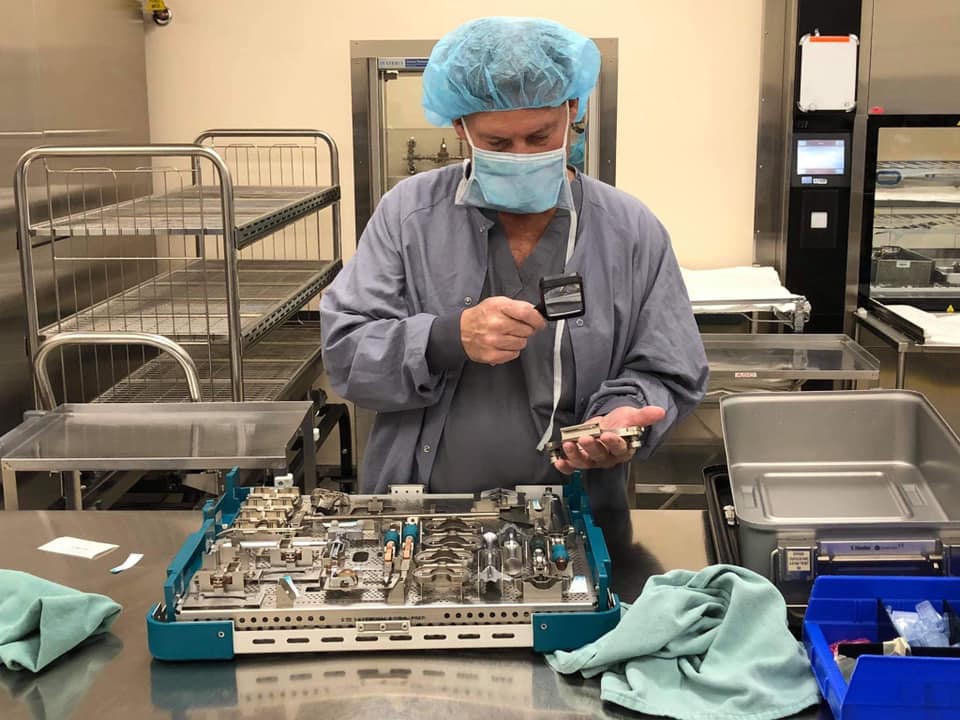
Quality Over Quantity in Sterile Processing Part 2 – How to begin the Quality Journey
Thank you to our wonderful partner and contributor, a sterile processing manager from Southeastern Pennsylvania, for writing these blogs with us. We are so grateful your time, insight, and dedication to your profession! We couldn’t do it without you.
Our recent Quality over Quantity blog focused on priorities to keep in mind when making the shift from a quantity to quality mindset in sterile processing. Those priorities included integrating new IFU processes, importance of reference and catalog numbers, IFU complexities, and several others. Now, in part two of this series, I’d like to recommend processes we’ve utilized at our own facility to help others solve the priorities listed in that post.
Involvement of next level leadership to “team up” with the problem
G et your teammates involved: Next level leadership, infection control, educator (SPD or OR), and a facility Joint Commission readiness team allows your team to holistically engage on behalf of patients, and able to see a 360-degree engaged team view for solving quality problems. Teammates can be of great assistance in training, audits, and keeping SPD updated with regulatory requirements.
et your teammates involved: Next level leadership, infection control, educator (SPD or OR), and a facility Joint Commission readiness team allows your team to holistically engage on behalf of patients, and able to see a 360-degree engaged team view for solving quality problems. Teammates can be of great assistance in training, audits, and keeping SPD updated with regulatory requirements.
Start small with any team changes: Set brief timelines to implement (1-2 weeks maximum to train and implement), gain momentum, change small behaviors accretive to goals, and audit, audit, audit until corrected. Gain team buy-in to a long term process with immediate aligned wins. You and the leadership team must be visibly involved in the short-term processes, stack the small improvements as successes, and continue to improve.
Where to start in renewing quality processes
Start with an IFU: Update a group or category of instruments (power, stringer, lumens, non-submersible), or a specific vendor (sports med “no name,” scopes-cameras “no name”) to cover multiple items for the staff. Go back to basics, where we usually find even most seasoned technicians have forgotten why they do what they do. Box locks need to be inspected for, a magnifier must be used to check the tips of A, B, F, H and W… you get the idea.
Get specific with standardizing uniform steps: That includes what brush for what purpose! It needs to be very clear, or staff will go off label or use what’s most convenient in front of them. Technicians can’t be expected to memorize IFU data, so ensure the automated electronic asset management system is utilized to its fullest. Deploy a small subset of teammates to help with end-user verbiage to keep it all short, simple, and executable. Lengthy explanations are for resource books and in-services, not for immediate visual aids.
 One set at a time: Take a basic, frequently used set, and verify you have all the reference numbers. Standardize the products in these sets and then move on to the next. Use your primary instrument vendor for data and on-site assistance. Utilize their services for maintaining stock, most-used items, and assisting with pegboard creation and maintenance.
One set at a time: Take a basic, frequently used set, and verify you have all the reference numbers. Standardize the products in these sets and then move on to the next. Use your primary instrument vendor for data and on-site assistance. Utilize their services for maintaining stock, most-used items, and assisting with pegboard creation and maintenance.
PM’s for your instruments are a MUST! On-site mobile sharpening trucks, etc. are a must to maintain your instrumentation and customer (surgeon) satisfaction. Maintained instruments result in better performance, reviews, and OR/SPD relationships. These partners can assist with inventory reporting assisting in case/turnover needs and assuring clarity in advance for budgeting needs.
In the 12 months since having a truck onsite twice a month, we have:
- Eliminated scissor sharpness complaints from daily to twice a year
- Seen “sharp” declines in complaints, and productivity
- Our customer satisfaction and relationships have thrived
Test it…. Yourself
Basic Time Studies: Take two members of your team and have them “mock-through” one of your updated process recommendations. Better yet, you should be one of those audit members! Start with a current IFU and complete the necessary steps while timing. But no rushing. You can use this as a baseline for these types of steps, and how they equate to multiple other processes. Example-time the basic processes of filling the sink, or loading/unloading an ultrasonic, or washer. Or, time one of your more involved processes such as robotics, or flexible endoscope processing.
These are the types of unrecognized units of people hours that can greatly assist in bench-marking quality and productivity performance, while also providing great ammunition for additional staff and technology to assure quality trumps quantity in your department.
Consistent quality is a journey
In my first “Quality Over Quantity” blog, I outlined some of the deterrents of a quality first mindset and provided some awareness and simple quality fix ideas. In this Quality Over Quantity part two post, I advocated for the process of HOW to begin. Consistent quality is a journey with an ever-moving destination, with the how and the why as your guideposts.
Read Part I, here: https://pure-processing.com/quantity-over-quality-in-sterile-processing-part-1-cause-and-effects/
Pure Processing solutions are designed to accommodate any facility’s pre-cleaning footprint, from tiny pre-cleaning corners in an endoscopy lab to a full SPD “dirty side.” Systems and accessories can be selected to optimize the tasks and achieve the workflow volume of each specific department. We also offer continuing education, training and in-service, and valuable resources for SPD staff.



